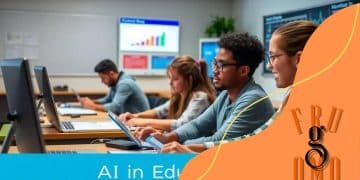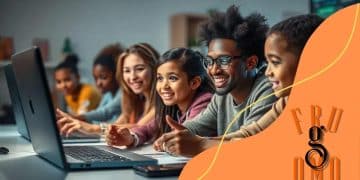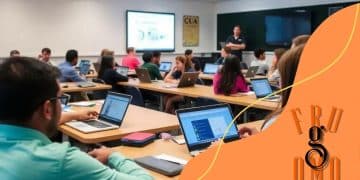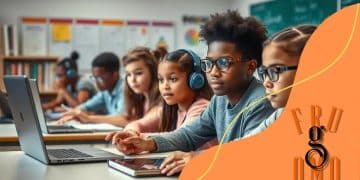Financial literacy curriculum innovations for better education
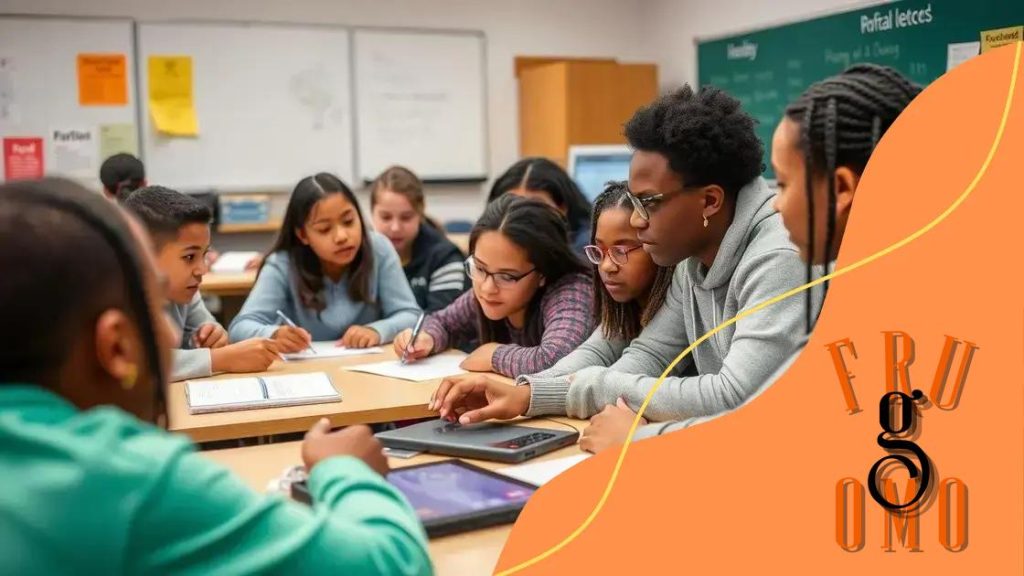
Integrating financial literacy curriculum innovations, such as technology and real-life scenarios, enhances student engagement and understanding, preparing them for effective money management in real-world situations.
Financial literacy curriculum innovations are reshaping how we educate future generations. But have you considered what this means for students today? In this article, we’ll delve into the latest strategies that can make financial education more effective and engaging.
Understanding the need for financial literacy
Understanding the need for financial literacy is essential in today’s world. Many young people lack the knowledge to manage their money effectively. Teaching financial literacy helps students make informed decisions about their finances and prepares them for real-life challenges.
Why is Financial Literacy Important?
As we navigate through life, mastering financial skills becomes crucial. Without proper guidance, students may struggle with managing debts, savings, and investments. Financial literacy equips them to handle these responsibilities with confidence.
- Promotes better money management
- Helps avoid debt traps
- Encourages savings and investment
This knowledge can lead to more secure futures for youngsters. It enables them to set financial goals and understand the value of budgeting. They become aware of the importance of credit scores and how they impact financial opportunities.
Real-World Applications
When students grasp the importance of financial literacy, they can apply these skills in real-life scenarios. For instance, learning how to create a budget prepares them for college expenses.
- Understanding loan options
- Setting up bank accounts
- Planning for major purchases
These experiences build a strong foundation. They not only help students in the present but also set them up for future successes in their financial lives. Systematically integrating financial literacy into curriculums will make a marked difference in students’ life trajectories.
Innovative teaching methods
Innovative teaching methods in financial literacy can greatly enhance the way students learn important concepts. By incorporating various strategies, educators can engage students more effectively. These methods allow for a deeper understanding and retention of financial knowledge.
Active Learning Techniques
One approach is to use active learning. This means encouraging students to participate in discussions and hands-on activities. When they engage with the material, they learn better. For example, role-playing scenarios can simulate real financial situations. This method makes learning relatable and fun.
- Role-playing financial decisions
- Group discussions on budgeting
- Hands-on simulations with virtual money
These activities help students think critically about their choices. Moreover, they can see the consequences of their financial decisions in a safe environment. Innovative teaching methods like these not only educate but also empower students.
Utilizing Technology
Technology is another powerful tool for teaching financial literacy. For instance, interactive apps and online games can make learning engaging. Students can manage virtual budgets or investments in these platforms. This interaction motivates them and provides instant feedback.
- Using budgeting apps in class
- Online quizzes to test knowledge
- Virtual reality experiences of financial situations
These methods cater to different learning styles, making it easier for all students to grasp complex ideas. Incorporating technology makes financial education relevant in a digital age.
Integrating technology in financial education

Integrating technology in financial education is transforming how students learn about money management. With the rise of digital tools, educators can create engaging and interactive learning experiences. Using technology helps bridge the gap between theory and practice, making financial concepts easier to grasp.
Interactive Learning Platforms
Platforms that provide interactive learning experiences are essential. These tools allow students to simulate real-world financial scenarios. For instance, budgeting games enable learners to make choices about spending and saving. This hands-on approach fosters critical thinking skills among students.
- Simulation games that replicate market scenarios
- Apps for tracking personal expenses
- Interactive quizzes on financial knowledge
By using these platforms, students can see how their decisions affect their finances. It also encourages collaboration as they work together on projects or challenges.
Online Resources and Courses
Additionally, online resources are accessible and offer a wealth of information. Students can participate in webinars and take online courses designed to teach specific financial topics. This flexibility allows them to learn at their own pace. With the option to review materials as needed, they can reinforce their understanding of complex concepts.
- Video tutorials explaining finance basics
- Online forums for discussing financial strategies
- Free resources for budgeting and saving tips
Integrating these tools into financial education not only enhances engagement but also prepares students for real-life financial challenges. As they learn about investments, debts, and savings, they gain confidence in their ability to handle money wisely.
Engaging students through real-life scenarios
Engaging students through real-life scenarios in financial literacy education is a great way to deepen their understanding. By applying concepts to real-world situations, students can see the relevance of their lessons. This approach fosters critical thinking and makes learning more enjoyable.
Real-World Applications
Using real-life scenarios allows students to connect with financial principles directly. For instance, teachers can present case studies about budgeting for a trip. Students can work together to calculate expenses, evaluate alternatives, and make decisions.
- Planning a budget for a school event
- Simulating job applications and salary negotiations
- Creating investment portfolios with fictional money
These activities bring financial concepts to life. When students actively participate in problem-solving, retention increases. They learn how to make informed decisions and the consequences of their financial choices.
Group Projects and Discussions
Furthermore, engaging students through group projects can enhance collaboration and communication skills. Assigning them to develop a business plan based on a fictional company can inspire creativity. They can conduct market research, budget costs, and forecast profits.
- Conducting surveys to understand consumer behavior
- Discussing ethical considerations in finance
- Researching trends in personal finance
This group work reinforces teamwork, promotes engagement, and allows for peer learning. As students share ideas, they deepen their understanding of financial concepts. Engaging students through real-life scenarios will help them develop a solid foundation in financial literacy.
Measuring the impact of curriculum changes
Measuring the impact of curriculum changes in financial literacy is crucial for understanding the effectiveness of new teaching methods. By evaluating these changes, educators can fine-tune their approaches and ensure that students receive the best education possible. The assessment process involves using various metrics and tools.
Assessment Tools and Metrics
To measure the impact effectively, teachers can utilize both qualitative and quantitative methods. Standardized tests provide quantitative data on student performance. However, qualitative feedback from students can offer richer insights into their learning experiences. Combining both types of data helps create a complete picture of the curriculum’s effectiveness.
- Standardized test scores
- Student surveys on engagement
- Observations of classroom dynamics
This dual approach allows educators to identify trends and areas for improvement. For instance, if test scores show improvement but student feedback indicates boredom, adjustments may be needed in teaching strategies.
Longitudinal Studies
Longitudinal studies can also play a significant role in measuring impact. Educators can track student progress over several years to see how curriculum changes affect their long-term financial knowledge and habits. This type of study helps in understanding the lasting effects of educational innovations.
- Tracking retention of knowledge
- Analysis of post-graduation financial choices
- Monitoring student participation in financial programs
Such studies provide invaluable insights, allowing schools to make informed decisions about future curricular enhancements. By focusing on the results, educators can continuously adapt and improve financial literacy education for their students.
FAQ – Frequently Asked Questions about Financial Literacy Education
What are the benefits of integrating technology in financial literacy education?
Integrating technology enhances engagement and provides interactive learning experiences, making financial concepts more relatable for students.
How can real-life scenarios improve student understanding of finance?
Real-life scenarios allow students to apply financial concepts to practical situations, increasing retention and relevance.
Why is it important to measure the impact of curriculum changes?
Measuring the impact helps educators understand what works best and allows for continuous improvement in teaching strategies.
What innovative teaching methods can be used to engage students?
Methods like project-based learning, interactive apps, and group discussions encourage active participation and teamwork among students.

